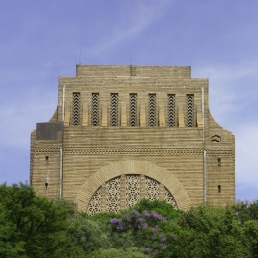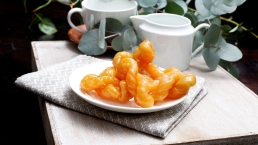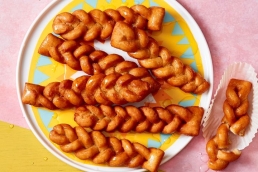
Afrikaans: As rich and diverse as the South African landscape
The Afrikaans culture is as rich and diverse as the South African landscape. It originated at the most southern point in Africa with the arrival of settlers from the Netherlands in 1652.
The pure Dutch language could not hold up against the strong influences of the local languages and those of the slaves who were imported to Cape Town. The result is a rich, manifold language and culture, with aspects borrowed, inherited and created from the Khoisan, and the slaves from places like the Far East, Portugal, Indonesia, Madagascar, Mozambique and Angola.
One of the most important happenings in the Afrikaans history is the Great Trek, the migration of early Afrikaans settlers who travelled by wagon from the Cape Colony to far flung corners of South Africa from 1836 onwards. This was an enormous feat of endurance with large communities trekking across harsh landscapes to create new settlements. Visit the Voortrekker Monument in Pretoria too see a permanent exhibition dedicated to the Groot Trek and Afrikaner culture and history.
The language became a political instrument and in June 1976, it led to one of the turning points in the struggle against apartheid. Visit the Apartheid Museum in Johannesburg, where there is a permanent exhibition dedicated to this event. It is an emotional experience, illustrating how things that can bind people together, like language, can also be used to divide communities.
Today, the Afrikaans community is striving towards inclusivity, not only embracing the different origins of this indigenous language but proudly playing its role in the broader South African community.

Recipe
Afrikaners pride themselves in their excellent baking skills, and you probably won’t get anything more Afrikaans than a koeksister. Directly translated, koeksister means “knotted sister”, which is a pretty accurate description. It is a delicious, deep fried, syrupy delight and always does the trick if you are after a sweet treat to go with your tea (or whenever you fancy it!).
SYRUP
250ml water (1 cup)
625ml white sugar (2 1/2 cups)
12 1⁄2ml lemon juice (2 1/2 tsp.)
5ml vanilla essence (1 tsp.)
DOUGH
375ml cake flour (1 1/2 cups)
22ml baking powder (4 1/2 tsp.)
1ml salt (1/4 tsp.)
150ml milk (the vanilla soy milk gives added flavor, 5/8 cup) or 150 ml vanilla-flavored soymilk (the vanilla soy milk gives added flavor, 5/8 cup)
750ml canola oil (3 cups)


DIRECTIONS
Put the water and sugar in a pot and bring to boil on low heat. Stir frequently until the sugar is completely dissolved. Boil for 7 minutes.
Remove the pot from the stove and stir in the lemon juice and vanilla essence. Put the pot into the fridge.
Mix the flour, salt, and baking powder thoroughly in a mixing bowl. Break the butter or margarine into small pieces and add to the four mixture. Add the milk. Mix well until a dough is formed.
Roll the dough out to a thickness of 5 mm (+ or – 1/4 in.). Cut the dough into thin (+ or – 10 mm or 1/2 in.) strips. Take 3 strips and join their ends on one side. Braid the strips to desired koeksister length and join other ends.
Heat the oil in a pot until fairly hot. Put about 3 koeksisters (or what can fit)at a time in the oil and fry them on both sides until they get a golden-brown color. As you remove the koeksisters for the oil, place them directly ito the syrup from the fridge. It is important to keep the syrup cool, so between soakings, return the syrup to the fridge to maintain its coolness.
Remove the koeksisters from the syrup and allow the excess syrup to drip off. Place them in the refrigerator to cool and then eat!
